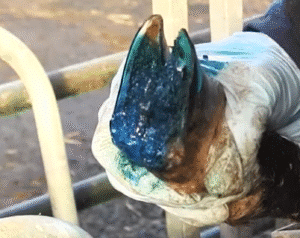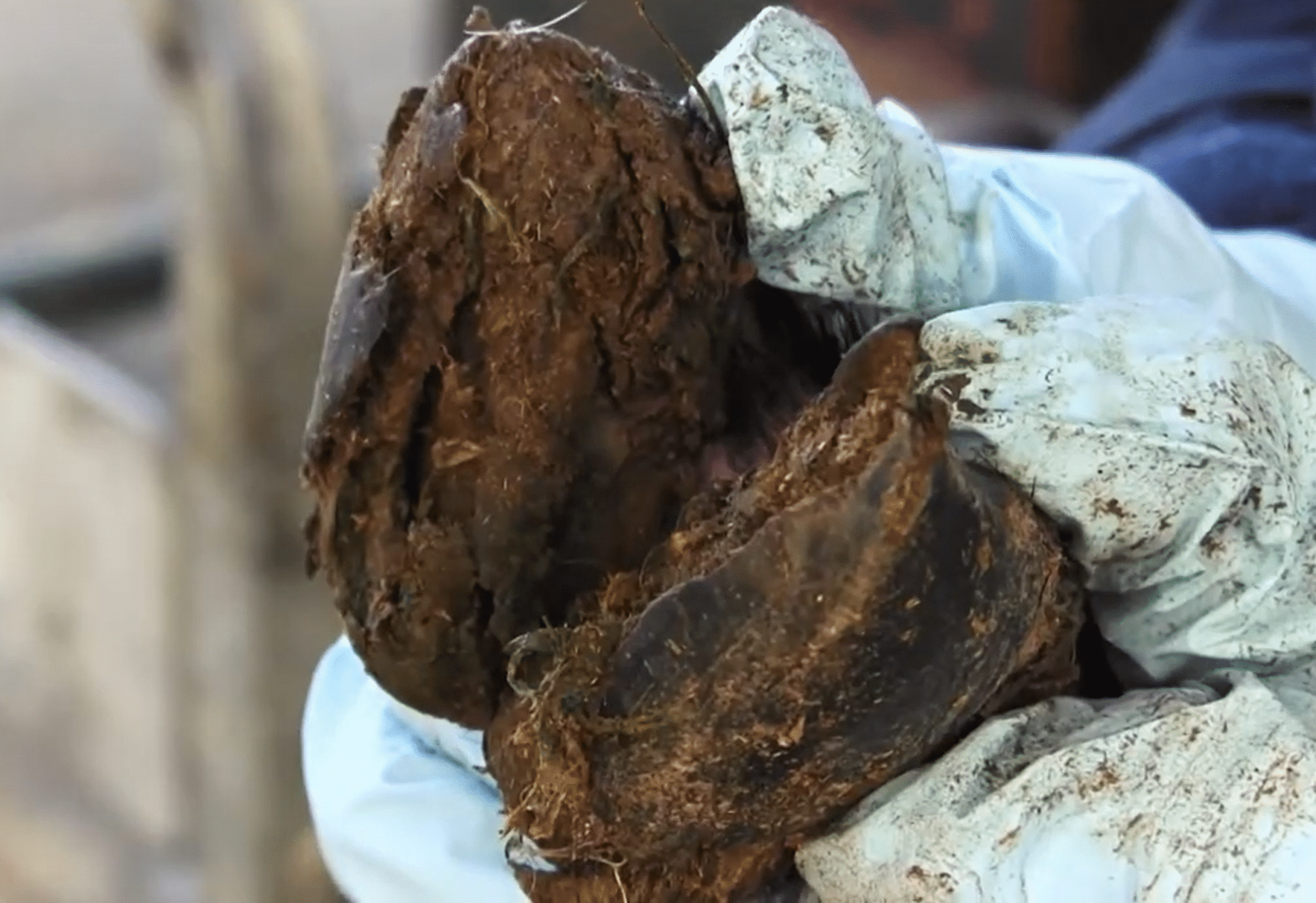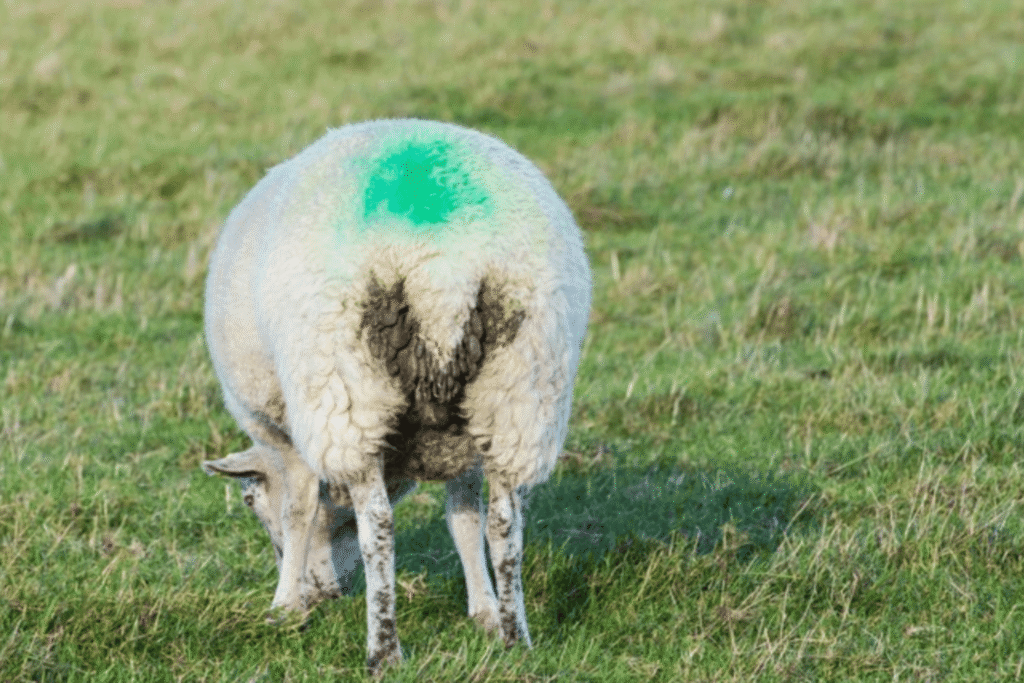Foot rot also called Hoof Rot is a contagious disease in sheep that affects the hoof and is caused by the bacterium Dichelobacter nodosus. It is a common disease, especially in sheep with black hooves. Foot rot is very painful for the affected animals, and in severe cases, they may become unable to move. If foot rot spreads within a herd, it requires considerable effort, time, and labor to control and eliminate. However, foot rot is a preventable disease with proper and attentive management.
Footrot Symptoms in Sheep
Foot rot in sheep typically begins with mild reddening, inflammation, and moisture in the 
Affected sheep show increasing lameness, reluctance to move, reduced feed intake, and lowered wool, milk, and weight gains. Advanced or virulent cases produce foul-smelling, blackened lesions and may cause chronic pain, predisposing the animal to secondary infections and flystrike. While benign footrot or foot scald often resolves with treatment and environmental improvement, virulent strains pose significant animal welfare and economic concerns.
Causes of Foot Rot in Sheep
Foot rot in sheep is caused by two types of bacteria: Dichelobacter nodosus and Fusobacterium necrophorum. Fusobacterium necrophorum lives naturally in the intestines of sheep and in soil or manure. It can cause mild infections called foot scald, especially when the ground is wet and muddy, which irritates the skin between the toes. Dichelobacter nodosus is the main bacteria that causes foot rot. It needs the skin between the toes to be soft or injured to infect the hoof. This bacteria can survive in the environment for a short time but can live in an infected hoof for years.
Foot rot spreads most easily in warm, wet, and muddy conditions, and all sheep breeds can be affected, although some are more sensitive than others. Young sheep are also more likely to get infected. The disease is usually worse in spring when pastures are damp, long, and muddy.
Foot Rot in Sheep Treatment
Treating foot rot in sheep involves foot bathing in zinc sulfate, hoof trimming and
Because the bacteria can survive in the hoof for weeks, it’s important to keep treated sheep in a clean, dry area for at least 24 hours after soaking. Pens, sheds, and yards should be cleaned and disinfected, and sheep should be moved to dry pastures to prevent reinfection.
Vaccination can also help speed up healing and protect healthy sheep. Footvax Vaccines against is used against Dichelobacter nodosus but work best when combined with good management and hygiene. They usually require two doses 4–6 weeks apart, with protection lasting for about 2–3 months. In areas where foot rot is common, booster doses every 3–6 months are recommended. However, vaccines may cause mild swelling or lumps at the injection site, and they don’t cover all bacterial strains.
For serious or recurring cases, a veterinarian may prescribe antibiotics and pain relief to help affected sheep recover faster. Regular hoof inspections, trimming, and footbathing during wet seasons are key to keeping the flock healthy and reducing future outbreaks.
Prevention of Foot Rot in Sheep
Preventing foot rot in sheep involves biosecurity measures, hoof care, environmental management, and proper cleaning of the hooves and housing area. Isolate any new animals, trim hooves regularly, and use footbaths with zinc sulfate. Also, keep pastures dry, well-drained, and avoid overcrowding to stop bacteria from spreading.
1. Quarantine and Inspect New Animals
Always isolate new or returning sheep for at least 30 days before adding them to the main flock. During quarantine, inspect hooves carefully for signs of lesions, odor, or softening, and trim if necessary. Clean and disinfect all transport vehicles, pens, and handling equipment to prevent bacterial introduction.
2. Maintain Hoof Health Regularly
Routine hoof trimming every 6–8 weeks helps detect early infection and prevents overgrown hooves where bacteria thrive. Always disinfect trimming tools and change gloves between animals to reduce cross-contamination.
3. Use Preventive Footbaths
Regular footbaths using zinc sulfate (10% solution) or copper sulfate are essential, especially in wet or high-risk seasons. Place footbaths near water troughs or exit points so sheep walk through them frequently. Ensure proper contact time for effective prevention.
4. Improve Pasture and Housing Conditions
Provide dry, well-drained areas for resting and feeding to reduce moisture buildup. Rotate grazing paddocks to prevent soil contamination and avoid overstocking, which increases bacterial spread in muddy or wet environments.
5. Vaccinate High-Risk Flocks
In areas where foot rot is persistent, vaccination can help control outbreaks. Though not all vaccines cover every strain of Dichelobacter nodosus, they can reduce disease severity and bacterial shedding when used alongside other preventive measures. Always consult a veterinarian for the right vaccination protocol.
Vaccine for Foot Rot Disease in Sheep
Footvax vaccine is used in foot rot disease in sheep. Foot rot vaccination plays an important role in flock management to reduce lameness in sheep. Lameness is a common and costly problem caused mainly by bacteria such as Dichelobacter nodosus (foot rot and scald) and Treponema species (CODD).
Vaccination is one of the five key steps in the sheep industry’s “Five-Point Plan” for lameness control, alongside culling affected animals, quarantining new stock, treating cases quickly, and reducing infection spread on the farm. The only commercially available vaccine, Footvax®, helps prevent foot rot and reduces the severity of lesions caused by D. nodosus. Studies show that vaccination can lower foot rot cases by 20–62%, and farms that vaccinate regularly for several years report fewer lameness problems.
Although not every flock requires vaccination, it is particularly beneficial for farms struggling with recurring lameness. Rams, which are more prone to foot issues, should ideally be vaccinated twice a year. Farmers are encouraged to discuss vaccination schedules with their veterinarian to ensure the best protection for their flock.
Conclusion: Foot Rot Disease in Sheep
Foot rot is one of the most challenging yet preventable diseases affecting sheep. It not only causes severe pain and lameness but also leads to major production and economic losses if not properly managed. Successful control depends on early detection, good hygiene, regular hoof care, and effective isolation of infected animals. Maintaining clean, dry living conditions and reducing exposure to wet, muddy areas greatly limit the spread of infection.
Vaccination, particularly with Footvax®, is an effective additional tool to reduce the number of cases and severity of foot rot when combined with the “Five-Point Plan” — culling, quarantining, prompt treatment, infection control, and vaccination. Consistent application of these measures protects animal welfare, reduces antibiotic use, and improves flock productivity.
In summary, preventing foot rot requires commitment and regular management, but the benefits are long-term: healthier sheep, lower treatment costs, and stronger overall flock performance. With careful monitoring and veterinary guidance, farmers can successfully control and even eliminate foot rot from their farms.
FaQs Footrot in Sheep
What is foot rot in sheep?
Foot rot is a contagious bacterial disease that affects the hooves of sheep and goats. It is caused mainly by the bacterium Dichelobacter nodosus and leads to painful inflammation and tissue damage in the hoof. In severe cases, the hoof may separate from the foot, causing lameness and difficulty walking.
What does foot rot look like in sheep?
Foot rot in sheep usually starts with redness, swelling, and moisture between the toes. As it worsens, a foul smell and grey or black discharge appear, and the hoof horn may start to lift or detach. Affected sheep often limp, avoid walking, and may eat less due to pain.
What causes foot rot in sheep?
Foot rot is caused by two types of bacteria — Dichelobacter nodosus and Fusobacterium necrophorum. Wet and muddy conditions soften the skin between the toes, allowing these bacteria to infect the hoof. Overcrowding, poor hygiene, and lack of hoof trimming increase the risk of infection.
What bacteria causes foot rot in sheep?
The main bacteria responsible for foot rot in sheep is Dichelobacter nodosus. Another bacterium, Fusobacterium necrophorum, helps the infection start by causing irritation or foot scald, which allows D. nodosus to enter and spread in the hoof tissue.
How to treat foot rot in sheep?
Treatment includes isolating infected sheep, trimming hooves, and soaking the feet in a 10% zinc sulfate or copper sulfate solution for 10–15 minutes. Antibiotics such as oxytetracycline may be prescribed by a vet for severe cases. Keep treated sheep in a clean, dry area to prevent reinfection.
How to cure foot rot in sheep?
To cure foot rot effectively, combine proper hoof trimming, regular footbathing, antibiotic treatment, and clean housing. Vaccination with Footvax® can help speed up recovery and prevent new infections when used alongside good management and hygiene.
How to get rid of foot rot in sheep?
To eliminate foot rot from a flock, follow a strict control plan: isolate infected animals, disinfect pens and equipment, use regular footbaths, trim hooves carefully, and vaccinate high-risk flocks. Keeping the environment dry and well-drained helps stop the bacteria from surviving and spreading.
How to prevent foot rot in sheep?
Preventing foot rot involves biosecurity, hoof care, vaccination, and clean living conditions. Quarantine new animals, trim hooves every 6–8 weeks, and use zinc sulfate footbaths regularly. Maintain dry pastures and avoid overcrowding. Vaccinating with Footvax® in high-risk areas adds extra protection.



